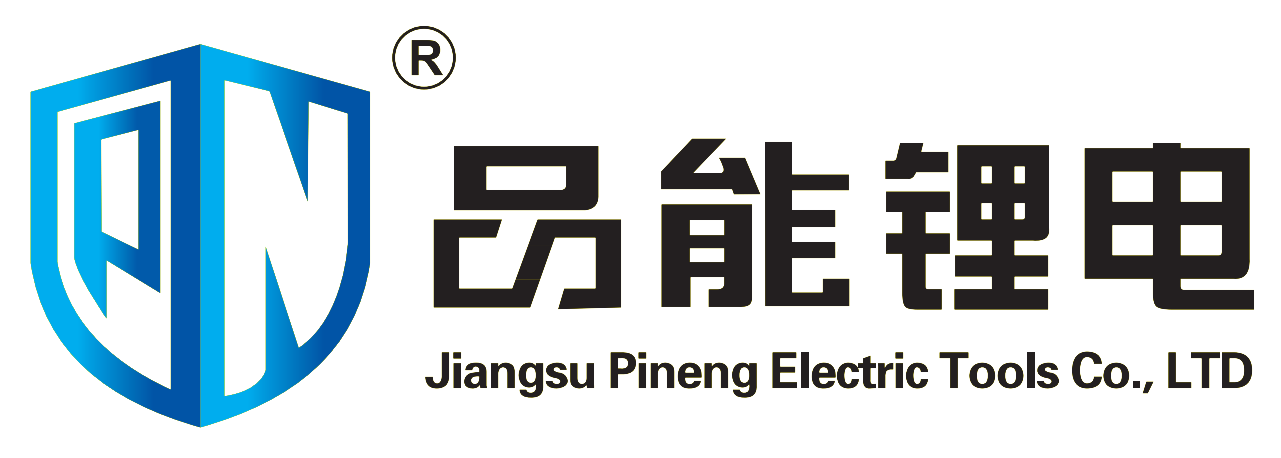Introduction to Common Power Drill Problems
The Importance of Power Drills in DIY Projects
Power drills have become must-have tools for anyone getting into DIY projects, from weekend warriors to seasoned pros who need them for drilling holes, tightening screws, and even taking apart old structures. What really stands out is how these tools handle all sorts of materials - wood, metal, plastic without breaking a sweat, which explains why they show up in so many home improvement scenarios. Take kitchen cabinet installation or basic carpentry jobs, a good quality power drill can cut hours off what would otherwise be backbreaking manual labor. According to recent surveys, around 70 percent of people who tinker around their houses consider power drills absolutely necessary equipment. That kind of popularity isn't just about convenience either; it reflects real value in making sure projects turn out right the first time instead of having to fix mistakes later on.
Overview of Frequent Power Drill Challenges
Power drills are incredibly useful but they do come with some common problems that can really impact how well they work and how satisfied we feel using them. The usual headaches include things like getting too hot, batteries dying fast, the chuck slipping when it shouldn't, and strange noises coming from nowhere. What causes trouble often depends on what kind of drill someone has and how much they actually use it. Cordless versions tend to run out of juice quicker than people expect, whereas those big heavy duty models sometimes just get way too warm after extended use. Knowing about these potential issues helps anyone who owns a drill keep their tool in good shape so it lasts longer and works better when needed. Regular checks and fixing small problems before they become bigger ones makes all the difference. With proper care, most power drills will handle whatever DIY task comes along without letting us down.
Problem 1: Power Drill Overheating Issues
Causes: Continuous Use and Clogged Vents
Power drills tend to overheat mainly because of two things: running them nonstop and blocked vents. If someone keeps using their drill without letting it rest between tasks, the motor doesn't get a chance to cool down properly, which builds up heat inside. Blocked air vents are another big problem since they stop proper airflow, making things worse as heat gets trapped, particularly when doing tough jobs around the house or workshop. Industry studies suggest about half of all overheating problems come from not taking care of those ventilation systems properly. Regular cleaning and checking makes sense here to keep those air paths open so the drill works safely and lasts longer overall.
Fix: Cooling Strategies and Vent Maintenance
Power drills tend to overheat when pushed too hard for too long, so there are some good ways to keep them running smoothly without breaking down. Letting the drill rest between longer jobs gives the motor a chance to cool off naturally rather than pushing through until it smokes. The vents on most drills get clogged with dust over time, so checking them regularly and giving them a quick clean makes a big difference in keeping temperatures under control. Don't try to force the drill beyond what it was designed for either – everyone knows that trying to drill through steel with a cheap model just asks for trouble and lots of extra heat. These simple steps do more than just prolong the life of the tool; they actually help maintain consistent power output when needed most.
Problem 2: Weak Power and Battery Drain
Causes: Aging Batteries and Charger Defects
Most people notice their drills losing power and draining batteries faster as time goes on. Lithium ion batteries just don't hold up forever. After around two to three years, many users start seeing a noticeable decline in how well their batteries perform. The battery itself starts to degrade over time, which means less power coming out and shorter run times during actual work. Faulty chargers can be part of the problem too. Sometimes they fail to fully charge the battery, leaving it underpowered for whatever task needs doing. Keeping an eye on both components makes all the difference when dealing with power problems. A quick check now and then usually catches issues before they become major headaches down the road.
Fix: Battery Replacement and Contact Cleaning
Swapping out old batteries for newer ones with higher capacity is probably the best bet if you want to get back that full power punch from your drill. Before buying anything though, check what kind of battery the manufacturer actually recommends for your particular model. Don't forget to give those battery contacts a good cleaning every now and then too. Dirty contacts mean poor connection and wasted energy, so this simple step makes a real difference in how well everything works together. Keep up with these basic maintenance tasks and your drill will stay dependable over time, making all those projects go much smoother without unexpected power drops mid-job.
Problem 3: Chuck Slippage Complications
Causes: Worn Chuck Components and Loose Bits
Slippage problems with chucks happen all too often on drilling machines and really messes with both how well they work and what's safe about them. Most of the time, old worn out parts inside the chuck are to blame since they just cant grab onto the drill bit properly anymore. After years of constant use, those little jaws inside start losing their grip strength completely, so when someone tries to drill something, the whole thing slips right out. Another big problem comes from bits that aren't tightened down correctly or left loose somehow. This makes drilling take forever and creates serious accident risks too. According to some numbers floating around the industry, roughly 30 percent of accidents involving drills actually stem from bad chuck adjustments. That should tell anyone working with these tools why keeping bits firmly in place matters so much for staying safe on the job site.
Fix: Proper Tightening Techniques and Replacement
Want to stop those pesky chuck slips? The key lies in making sure bits are properly tightened with the right technique. Getting this right means grabbing the right tools for the job and applying enough pressure without going overboard. A good tight fit really cuts down on slippage problems when things get busy. Don't forget to check the chuck regularly either. If any part looks worn out or damaged, swap it out immediately. No sense risking damage to the drill itself just because we're saving money on replacements. There are plenty of online videos showing exactly how to do this correctly. Watching these can save headaches later on while keeping operations running smoothly and safely.
Problem 4: Unusual Noises from Power Drills
Causes: Loose Internal Parts and Worn Gears
Strange noises coming from power drills usually mean something inside is loose or worn out after years of use. Most often it's the gears getting play in them or parts shifting around where they shouldn't. If people just ignore these sounds though, things tend to get worse fast. The drill ends up breaking down sooner than expected because small problems turn into big ones. According to some industry folks I've talked to, about 40 percent of all power drill breakdowns happen simply because owners didn't bother checking what was making that weird noise months earlier. So next time your drill starts sounding off, don't wait around hoping it goes away on its own. Get it looked at before it becomes a real headache.
Fix: Inspection Methods and Screw Tightening
Unusual noises often point to something loose inside, so checking for those pesky screws and wobbly parts is really important if we want quiet machines. Just going through and tightening everything down usually does wonders for getting rid of those annoying rattles and buzzes when things run. For folks who want to avoid surprises later on, keeping track with some sort of maintenance schedule makes sense too. A simple list works great most of the time, covering stuff like looking at what's inside and making sure all the critical screws get tightened properly before they start causing trouble again.
When to Seek Professional Repair
When strange sounds keep coming even after all the usual tightening and checking has been done, this often means there's something mechanically wrong that needs fixing by someone who knows their stuff. Getting a repair shop involved helps spot those tricky problems that just won't show up during normal inspections. The numbers back this up too most folks find they save around half on repairs costs if they get help early before things get worse. So don't hesitate to call in the pros whenever weird noises stick around no matter how much basic maintenance gets performed.
Preventative Maintenance for Power Drills
Routine Cleaning Procedures
Keeping power drills running smoothly and lasting longer depends a lot on how often they get cleaned. When we clean both outside and inside parts regularly, it stops dirt and grime from getting into places where they shouldn't be. Most folks find small soft brushes work wonders for surfaces while canned air gets into tight spots nobody wants to miss. Setting aside time every few weeks for this kind of upkeep makes sense for anyone who doesn't want their project stopped cold because something broke down at the worst possible moment. Sure, nobody likes spending extra minutes on maintenance tasks, but trust me when I say it pays off in the long run.
Storage Best Practices for Longevity
Keeping power drills properly stored helps prevent rust and corrosion that usually comes from getting damp. The best bet is to put them somewhere dry where air can circulate around the tool. Many people find that storing their drills in plastic containers works well, especially if they live in humid areas. Original packaging can work too, though it might get crushed over time. Taking care of storage matters a lot for how long the drill lasts and how well it performs when needed. A little attention to where tools sit when not in use goes a long way toward avoiding costly replacements down the road.
When to Replace Key Components
Checking on important parts such as batteries, chucks, and motors regularly helps figure out when it's time for replacements. Look out for any drop in performance or obvious signs of wear that might mean something needs changing soon. Most experienced technicians recommend swapping out worn components before they fail completely. Doing so keeps tools running better for longer periods. Proper maintenance makes all the difference in how long power tools last and how well they work day after day.
FAQ Section
Why do power drills overheat?
Power drills typically overheat due to continuous use without breaks and clogged air vents, which restrict airflow and retain heat.
How can I fix battery drain in my drill?
Replacing aging batteries and cleaning battery contacts regularly can help alleviate battery drain issues and improve power output.
Why does my drill chuck keep slipping?
Chuck slippage often occurs due to worn chuck parts or improperly tightened bits, requiring proper tightening techniques and component replacement.
What should I do if my drill makes unusual noises?
Inspect for loose internal parts and tighten screws as necessary. If noises persist, seeking professional repair services is advisable.
How can I extend the life of my power drill?
Regular cleaning, proper storage, and timely replacement of key components can extend the lifespan and maintain the performance of your power drill.


